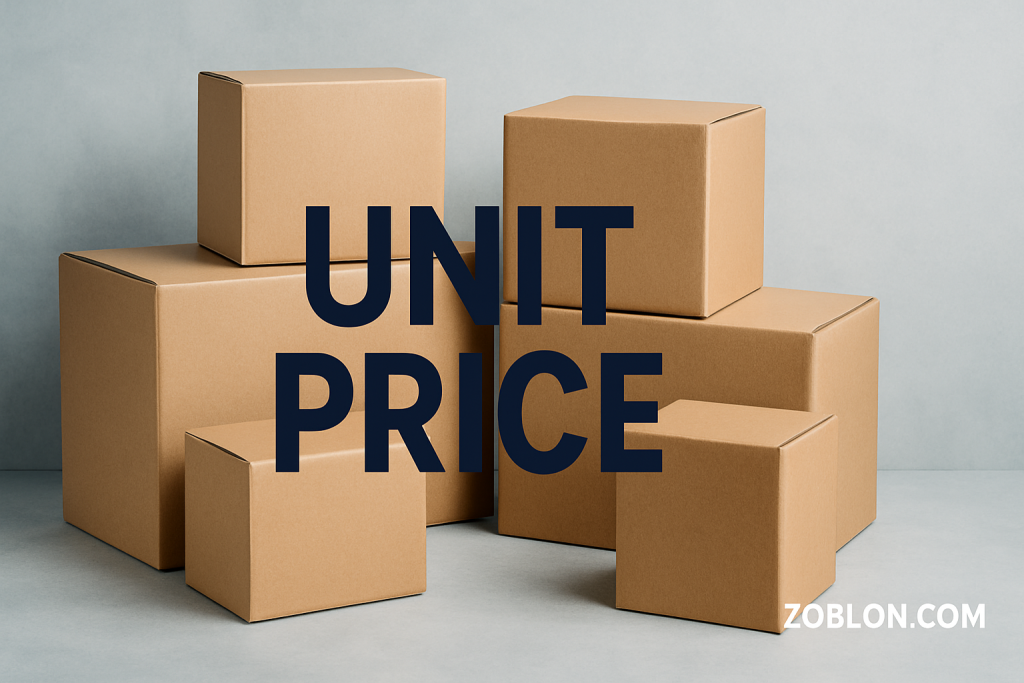When shopping, especially when comparing products, have you ever wondered how to determine which option provides the best value? The key lies in understanding the unit price, which is the price of a single item within a group of items. Mastering this concept can transform your shopping habits, helping you become a more informed consumer, manage your budget effectively, and ensure you’re always getting the most for your money.
In this comprehensive guide, we’ll explore everything about unit price, from its definition and importance to practical tips and real-world examples. By the end, you’ll understand why paying attention to the unit price can significantly enhance your shopping experience.
What Exactly Is Unit Price?
The unit price is simply the cost for a single item or a single standard measurement unit (such as ounces, grams, liters, or pieces) within a group of items. Retailers typically display unit prices alongside total prices, allowing consumers to quickly assess the value of one product compared to another.
For example, if you purchase a pack of 12 sodas for $6, the unit price per soda is $0.50 ($6 ÷ 12). Understanding this calculation enables you to instantly determine the best deal when shopping.
How to Calculate Unit Price
Calculating the unit price is straightforward and invaluable for budget-conscious shopping:
Unit Price = Total Price ÷ Quantity
Let’s illustrate with a simple example:
-
Scenario: You see two packs of cereal in a grocery store.
-
Pack A: 500g priced at $3.00
-
Pack B: 750g priced at $4.20
-
Let’s calculate the unit price for both:
-
Pack A: $3.00 ÷ 500g = $0.006 per gram
-
Pack B: $4.20 ÷ 750g = $0.0056 per gram
Here, Pack B offers better value, being cheaper per gram.
Why Is Unit Pricing Important?
1. Simplifies Comparison Shopping
Unit pricing is essential for easy, accurate product comparisons. It allows you to make informed decisions by clearly illustrating which product gives you more value, regardless of packaging size differences.
2. Helps Budget Management
By clearly seeing the unit price, you can better manage your budget, prioritizing products that maximize value for each dollar spent.
3. Reduces Waste
Bulk buying can be economical, but sometimes leads to unnecessary waste if items spoil before consumption. Unit pricing helps you balance bulk purchasing benefits against potential waste.
Unit Pricing Across Industries
1. Retail Industry
In retail stores, unit prices are usually displayed directly beneath products on shelves. These clearly labeled unit prices guide consumers, enhancing transparency and trust.
2. Construction Industry
In construction, unit pricing is crucial for transparent budgeting, allowing for precise cost calculations for labor and materials per unit of measure (e.g., per square meter or per cubic meter).
3. Utilities Sector
Utilities such as electricity and water bills are determined by unit pricing (e.g., per kilowatt-hour for electricity, per cubic meter for water). This helps consumers manage consumption efficiently.
Common Challenges with Unit Pricing
1. Inconsistent Measurement Units
Different products or brands may use varying measurement units (such as pounds vs. grams), making comparisons challenging without proper conversions.
2. Hidden or Additional Costs
Some prices do not reflect hidden costs such as shipping, taxes, or installation fees, potentially misleading consumers about true costs.
3. Promotional Offers
Special promotions, bundled offers, or bonus packs can sometimes obscure the actual unit price, making it harder for consumers to determine true value.
Practical Tips to Make the Most of Unit Pricing
-
Always Check the Unit Price: Don’t be distracted by flashy packaging or promotional claims. Look closely at the unit price to make informed decisions.
-
Watch for Hidden Costs: Be aware of additional fees not reflected in the unit price.
-
Consider Shelf Life and Usage: Bulk buying might seem economical, but only buy in bulk if you’re sure the product won’t expire before use.
-
Use Apps or Tools: There are smartphone apps available that calculate and compare unit prices, aiding smarter purchasing decisions.
Real-Life Case Study: Smart Savings with Unit Pricing
Consider this scenario: Maria, a mother of two, was aiming to reduce her family’s grocery bills. By diligently checking unit prices, she found that buying snacks and beverages in larger, bulk packages offered significant savings. Over three months, Maria successfully reduced her monthly grocery expenditure by 15% without sacrificing quality or quantity.
Expert Insight on Unit Pricing
According to Sarah Johnson, a consumer economics expert, “Understanding and utilizing unit pricing consistently can save an average household hundreds of dollars annually. It transforms casual shopping into strategic consumer decision-making.”
Frequently Asked Questions (FAQs)
Q: What does the term “unit price” mean exactly?
A: Unit price refers to the cost of a single item or measurement unit within a group of items.
Q: Is unit price always displayed in stores?
A: While many stores display unit pricing, it’s not universally mandated. Checking for unit price labels or calculating it yourself is advisable.
Q: Can unit pricing apply to online shopping?
A: Absolutely. Most online platforms list unit prices, and you can calculate them yourself to ensure the best value.
Recent Trends in Unit Pricing (as of 2025)
In recent years, especially since 2025, the rise in digital shopping has made online tools that instantly calculate and display unit prices increasingly popular. Retailers are leveraging technology to provide clearer, real-time unit pricing, enhancing consumer trust and shopping efficiency.
Read Also: Taylor Swift’s Producer Hints at New Album Release This Year
Conclusion: Mastering Unit Pricing for Better Shopping Decisions
Understanding unit pricing—the price of a single item within a group—is essential for savvy shopping, effective budgeting, and minimizing waste. By consistently applying unit pricing knowledge, you empower yourself as a consumer, ensuring you’re always getting the best value possible.
Next time you shop, make unit pricing your go-to strategy, and experience the difference it makes.

